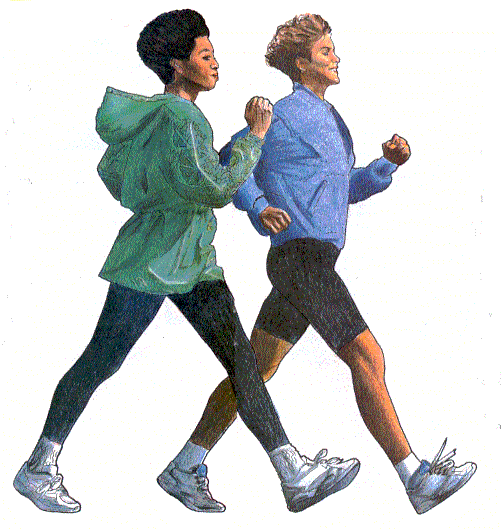Monday, February 22, 2010
Internal and Environmental Factors Trigger Unique Brain Activity in Teens
Posted by ♥lYrA_aLthEa♥ at 11:41 PM 0 comments
Midday Nap Markedly Boosts the Brain's Learning Capacity
Posted by ♥lYrA_aLthEa♥ at 4:04 PM 0 comments
Sunday, February 21, 2010
Youngest Extra-Solar Planet Discovered Around Solar-Type Star
Posted by ♥lYrA_aLthEa♥ at 6:15 PM 0 comments
Walking Linked to Eased Osteoarthritis, Study Suggests
Posted by ♥lYrA_aLthEa♥ at 5:41 PM 0 comments
Thursday, February 18, 2010
Drama or Reality TV: Do Medical Shows Depict Proper First Aid for Seizures?
http://www.sciencedaily.com/releases/2010/02/100214220102.htm
Posted by ♥lYrA_aLthEa♥ at 4:09 PM 0 comments
Thursday, February 11, 2010
Long-Distance Migration Shapes Butterfly Wings
Posted by ♥lYrA_aLthEa♥ at 5:19 PM 0 comments
How The Moon Produces Its Own Water
Posted by ♥lYrA_aLthEa♥ at 3:59 PM 0 comments
Tuesday, February 9, 2010
Moms Influence How Children Develop Advanced Cognitive Functions
Executive functioning is a set of advanced cognitive functions -- such as the ability to control impulses, remember things, and show mental flexibility -- that help us plan and monitor what we do to reach goals. Although executive functioning develops speedily between ages 1 and 6, children vary widely in their skills in this area. Now a new longitudinal study tells us that moms play a role in how their children develop these abilities.
The study was conducted at the University of Montreal and the University of Minnesota. It appears in the January/February 2010 issue of the journal Child Development.
The researchers looked at 80 pairs of middle-income Canadian moms and their year-old babies. It turns out that the ways moms act when they're playing and solving puzzles with their babies can explain some of the differences in children's development of executive functioning.
Children of moms who answered their children's requests for help quickly and accurately; talked about their children's preferences, thoughts, and memories during play; and encouraged successful strategies to help solve difficult problems performed better at a year and a half and 2 years on tasks that call for executive skills than children of moms who didn't use these techniques in interacting with their youngsters.
"The study sheds light on the role parents play in helping children develop skills that are important for later school success and social competence," according to Annie Bernier, professor of psychology at the University of Montreal and the study's lead author.
Posted by ♥lYrA_aLthEa♥ at 4:17 PM 0 comments
Thursday, February 4, 2010
Excessive Internet Use Is Linked to Depression
People who spend a lot of time browsing the Internet are more likely to show depressive symptoms, according to the first large-scale study of its kind in the West by University of Leeds psychologists.
Researchers found striking evidence that some users have developed a compulsive internet habit, whereby they replace real-life social interaction with online chat rooms and social networking sites. The results suggest that this type of addictive surfing can have a serious impact on mental health.
Lead author Dr Catriona Morrison, from the University of Leeds, said: "The internet now plays a huge part in modern life, but its benefits are accompanied by a darker side.
"While many of us use the internet to pay bills, shop and send emails, there is a small subset of the population who find it hard to control how much time they spend online, to the point where it interferes with their daily activities."
These 'internet addicts' spent proportionately more time browsing sexually gratifying websites, online gaming sites and online communities. They also had a higher incidence of moderate to severe depression than non-addicted users.
"Our research indicates that excessive internet use is associated with depression, but what we don't know is which comes first -- are depressed people drawn to the internet or does the internet cause depression?
"What is clear, is that for a small subset of people, excessive use of the internet could be a warning signal for depressive tendencies."
Incidents such as the spate of suicides among teenagers in the Welsh town of Bridgend in 2008 led many to question the extent to which social networking sites can contribute to depressive thoughts in vulnerable teenagers. In the Leeds study, young people were more likely to be internet addicted than middle-aged users, with the average age of the addicted group standing at 21 years.
"This study reinforces the public speculation that over-engaging in websites that serve to replace normal social function might be linked to psychological disorders like depression and addiction," added Dr Morrison. "We now need to consider the wider societal implications of this relationship and establish clearly the effects of excessive internet use on mental health."
This was the first large-scale study of Western young people to consider the relationship between internet addiction and depression. The internet use and depression levels of 1,319 people aged 16-51 were evaluated for the study, and of these, 1.2% were classed as being internet addicted. While small, this is larger than the incidence of gambling in the UK, which stands at 0.6%. The research will be published in the journal Psychopathology on 10th February.
Posted by ♥lYrA_aLthEa♥ at 4:27 PM 0 comments
Monday, February 1, 2010
Prayer Increases Forgiveness, Study Shows

We have all been guilty of a transgression at one time or another. That's because we're not perfect. We all commit hurtful acts, violate trust, and hope for forgiveness.
That's simply a fact, and here's another one: Nine out of 10 Americans say that they pray -- at least on occasion. Florida State University psychologist Nathaniel Lambert put these two facts together and came up with an idea: Why not take all that prayer and direct it at the people who have wronged us? Is it possible that directed prayer might spark forgiveness in those doing the praying -- and in the process preserve relationships?
Lambert and his colleagues decided to test this scientifically in two experiments appearing in Psychological Science, a journal of the Association for Psychological Science. In the first, they had a group of men and women pray one single prayer for their romantic partner's well being. Others -- the experimental controls -- they simply described their partner, speaking into a tape recorder.
Then they measured forgiveness. The scientists defined forgiveness as the diminishing of the initial negative feelings that arise when you've been wronged. Their results showed that those who had prayed for their partner harbored fewer vengeful thoughts and emotions: They were more ready to forgive and move on.
If one single prayer can cause such a striking difference in feelings, then what could prayer over a period of time do for a relationship? In a second study, the researchers had a group of men and women pray for a close friend every day for four weeks. Others simply reflected on the relationship, thinking positive thoughts but not praying for their friend's well-being. They also added another dimension. They used a scale to measure selfless concern for others -- not any particular person but other people generally. They speculated that prayer would increase selfless concern, which in turn would boost forgiveness.
And that's just what they found. But why? How does this common spiritual practice exert its healing effects? The psychological scientists have an idea: Most of the time, couples profess and believe in shared goals, but when they hit a rough patch, they often switch to adversarial goals like retribution and resentment. These adversarial goals shift cognitive focus to the self, and it can be tough to shake that self-focus. Prayer appears to shift attention from the self back to others, which allows the resentments to fade.
Posted by ♥lYrA_aLthEa♥ at 4:11 PM 0 comments
















